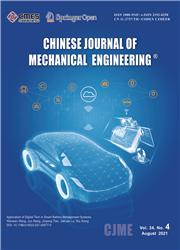基于模型解释策略的机器学习框架改进超声检测
IF 4.5
2区 工程技术
Q1 Engineering
引用次数: 0
摘要
超声检测(UT)越来越多地与机器学习(ML)技术相结合,以智能识别损伤。从UT数据中提取重要特征对于有效的缺陷表征至关重要。此外,ML背后隐藏的物理是无法解释的,这降低了ML方法在UT中的泛化能力和通用性。为了提高UT的检测精度和计算效率,本文提出了一种基于模型解释策略的通用ML框架。首先,利用信号处理技术从UT信号中提取多域特征,构造初始特征空间;随后,将Shapley加性解释(SHAP)、滤波法、嵌入法和包装法相结合,创新地开发了一种基于模型可解释策略的特征选择方法(FS-MIS)。自适应地确定最有效的机器学习模型和与目标缺陷相关性更好的最优特征子集。通过识别和定位0.5 λ中心距离和不同深度的侧钻孔(sdh),验证了该框架的有效性。通过实验,采用超声阵列探头对含有两个sdh的多个铝合金试样进行FMC数据采集。将FS-MIS选择的最优特征子集作为所选ML模型的输入,用于训练和预测相邻sdh发射的散射波的到达时间(ToAs)。实验结果表明,预测toa的相对误差均在3.67%以下,平均误差为0.25%,显著提高了UT信号的时间分辨率。在此基础上,将预测toa赋给相应的原始信号,用于解耦重叠脉冲回波,重构高分辨率FMC数据集。采用全聚焦法(TFM)将成像分辨率提高到0.5 λ。孔深和中心距的相对误差分别不大于0.51%和3.57%。最后,通过与初始特征空间和传统降维技术的比较,验证了所提出的FS-MIS的优越性能。本文章由计算机程序翻译,如有差异,请以英文原文为准。
Improving Ultrasonic Testing by Using Machine Learning Framework Based on Model Interpretation Strategy
Abstract Ultrasonic testing (UT) is increasingly combined with machine learning (ML) techniques for intelligently identifying damage. Extracting significant features from UT data is essential for efficient defect characterization. Moreover, the hidden physics behind ML is unexplained, reducing the generalization capability and versatility of ML methods in UT. In this paper, a generally applicable ML framework based on the model interpretation strategy is proposed to improve the detection accuracy and computational efficiency of UT. Firstly, multi-domain features are extracted from the UT signals with signal processing techniques to construct an initial feature space. Subsequently, a feature selection method based on model interpretable strategy (FS-MIS) is innovatively developed by integrating Shapley additive explanation (SHAP), filter method, embedded method and wrapper method. The most effective ML model and the optimal feature subset with better correlation to the target defects are determined self-adaptively. The proposed framework is validated by identifying and locating side-drilled holes (SDHs) with 0.5 λ central distance and different depths. An ultrasonic array probe is adopted to acquire FMC datasets from several aluminum alloy specimens containing two SDHs by experiments. The optimal feature subset selected by FS-MIS is set as the input of the chosen ML model to train and predict the times of arrival (ToAs) of the scattered waves emitted by adjacent SDHs. The experimental results demonstrate that the relative errors of the predicted ToAs are all below 3.67% with an average error of 0.25%, significantly improving the time resolution of UT signals. On this basis, the predicted ToAs are assigned to the corresponding original signals for decoupling overlapped pulse-echoes and reconstructing high-resolution FMC datasets. The imaging resolution is enhanced to 0.5 λ by implementing the total focusing method (TFM). The relative errors of hole depths and central distance are no more than 0.51% and 3.57%, respectively. Finally, the superior performance of the proposed FS-MIS is validated by comparing it with initial feature space and conventional dimensionality reduction techniques.
求助全文
通过发布文献求助,成功后即可免费获取论文全文。
去求助
来源期刊

Chinese Journal of Mechanical Engineering
ENGINEERING, MECHANICAL-
CiteScore
5.60
自引率
4.80%
发文量
3097
审稿时长
8 months
期刊介绍:
Chinese Journal of Mechanical Engineering (CJME) was launched in 1988. It is a peer-reviewed journal under the govern of China Association for Science and Technology (CAST) and sponsored by Chinese Mechanical Engineering Society (CMES).
The publishing scopes of CJME follow with:
Mechanism and Robotics, including but not limited to
-- Innovative Mechanism Design
-- Mechanical Transmission
-- Robot Structure Design and Control
-- Applications for Robotics (e.g., Industrial Robot, Medical Robot, Service Robot…)
-- Tri-Co Robotics
Intelligent Manufacturing Technology, including but not limited to
-- Innovative Industrial Design
-- Intelligent Machining Process
-- Artificial Intelligence
-- Micro- and Nano-manufacturing
-- Material Increasing Manufacturing
-- Intelligent Monitoring Technology
-- Machine Fault Diagnostics and Prognostics
Advanced Transportation Equipment, including but not limited to
-- New Energy Vehicle Technology
-- Unmanned Vehicle
-- Advanced Rail Transportation
-- Intelligent Transport System
Ocean Engineering Equipment, including but not limited to
--Equipment for Deep-sea Exploration
-- Autonomous Underwater Vehicle
Smart Material, including but not limited to
--Special Metal Functional Materials
--Advanced Composite Materials
--Material Forming Technology.
 求助内容:
求助内容: 应助结果提醒方式:
应助结果提醒方式:


